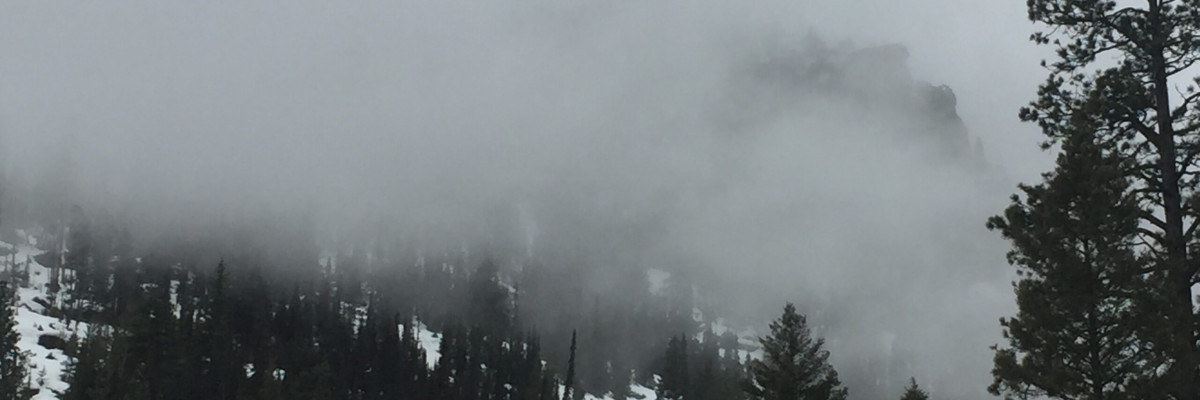The avalanche danger is MODERATE. Wet avalanches will be possible across West Central Montana backcountry as a result of warm temperatures and significant rain. Carefully evaluate snow and terrain before traveling on steep slopes or onto likely trigger points.
Good morning, this is Logan King with the West Central Montana Avalanche Center’s avalanche advisory for Saturday, April 6th, 2019. This danger rating does not apply to operating ski areas, expires at midnight tonight and is the sole responsibility of the U.S. Forest Service.
Weather and Snowpack
Overnight temperatures cooled a bit and rain and snow showers continued. Above about 5,500 temperatures briefly dropped below freezing early this morning creating a light freeze. Mountain temperatures this morning are hovering right around freezing and range from 28 to 33 degrees Fahrenheit. Showers yesterday brought rain to a good portion of the advisory area and to upper elevations. Overnight the rain line dropped bringing heavy snow that fell onto rain-saturated snow. Snow water equivalents for the past 24 hours range from 0.1 to 0.6 inches of water. Winds are primarily out of the west to southwest and are sustained in the upper teens with gusts into the low thirties.
A few days with above freezing temperatures and rain to upper elevations combined with very light freeze last night and continued rain transitioning to wet heavy snow will increase wet avalanche activity today. Wet avalanches can be challenging to predict and won’t give you many red flags. Look for increased loose activity or roller balls to identify areas of increased potential. Avoid likely starting zones like rocky terrain, rollovers, and saturated or runneled snow.
The wet and heavy new snow will need a day or two to bond to the old snow surface. Loose wet avalanches will be widespread and easily triggered in steep terrain today. Cornices will continue to lose strength as temperatures climb above freezing again today. With yesterdays high elevation rain (approx 8,000 feet) expect to see an increase in glide cracks. The snowpack is wet and lubricated and primed for gliding at any elevation now. Glide avalanches are extremely difficult to predict and can release without warning, steer clear of slopes that have glide cracks and avoid traveling below them or on adjacent terrain as it likely has a similar structure and bed surface necessary for glide avalanches.
The bottom line is that rain yesterday, a very light overnight freeze, wet new snow and temperatures well above freezing will all increase the avalanche danger today. Avalanche activity will increase through the afternoon and requires anyone in the mountains to stay aware of rapidly changing conditions as the day progresses.
Avalanche and Weather Outlook
Diminishing showers this morning will make today a bit drier than yesterday. Light and scattered shower potential will again develop later today but snow and rain totals will be minimal (forecast). The avalanche danger today will increase with emphasis on solar aspects and locations that experience rain showers today. Sunday will bring a significant increase for snow as a moist system moves into the region. Snow levels will drop and several inches of new snow is possible.
We will conclude our regular forecasts next week as this storm cycle ends but will continue to post updates as necessary after that. Observations on our public observations page will continue to get posted and shared with the community so keep sending in what you find.
Ski and ride safe.
























